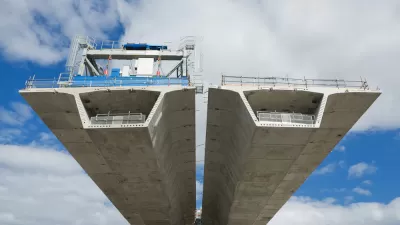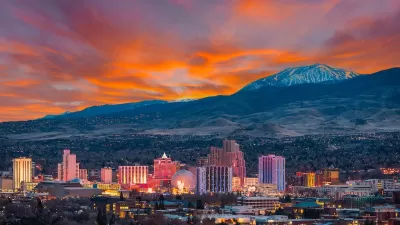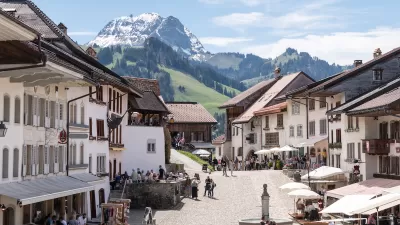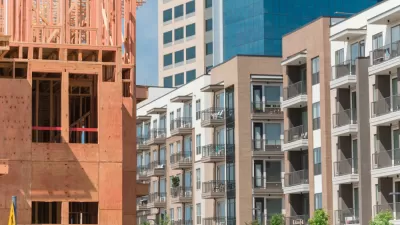Two economists discuss how specific kinds of deregulation could speed up growth. They emphasize planning issues: local overregulation of development and the high cost of infrastructure, among others.

In this piece, the follow-up to a debate on how government can promote growth, economists Tyler Cowen and Noah Smith debate how the American economy can be made more efficient and productive. They advocate for looser regulations and labor laws, but they also touch on land use policy and infrastructure.
Says Smith, "I think the two biggest and most obvious things to address are land-use regulation and occupational licensing. There's an increasing recognition that policies to prevent dense development are holding cities back from their economic potential."
Smith also favors infrastructure investment. "Repairing our existing infrastructure gets the highest returns, of course. But increased investments in new things like self-driving car infrastructure, smart electrical grids and faster broadband seem like they could also pay dividends."
Cowen pushes even harder for deregulation. "We couldn't have built today's energy infrastructure with today's regulations, so how are we to manage the energy infrastructure of the future? Less NIMBYism for wind power is step one of a thousand we could make. Or take fracking. It has made energy cheaper, created jobs and helped lower carbon emissions. And yet it remains a legally fraught enterprise."
Smith agrees that we have made it very difficult to build new infrastructure, but doesn't assign blame to labor laws, as Cowen does. "Regarding infrastructure costs, I doubt that unionized labor is a big part of our problem, since Europe has stronger unions but much cheaper costs. It's probably due more to our inefficient contracting process."
FULL STORY: Debating the Supply Side of Growth

Study: Maui’s Plan to Convert Vacation Rentals to Long-Term Housing Could Cause Nearly $1 Billion Economic Loss
The plan would reduce visitor accommodation by 25,% resulting in 1,900 jobs lost.

North Texas Transit Leaders Tout Benefits of TOD for Growing Region
At a summit focused on transit-oriented development, policymakers discussed how North Texas’ expanded light rail system can serve as a tool for economic growth.

Why Should We Subsidize Public Transportation?
Many public transit agencies face financial stress due to rising costs, declining fare revenue, and declining subsidies. Transit advocates must provide a strong business case for increasing public transit funding.

How to Make US Trains Faster
Changes to boarding platforms and a switch to electric trains could improve U.S. passenger rail service without the added cost of high-speed rail.

Columbia’s Revitalized ‘Loop’ Is a Hub for Local Entrepreneurs
A focus on small businesses is helping a commercial corridor in Columbia, Missouri thrive.

Invasive Insect Threatens Minnesota’s Ash Forests
The Emerald Ash Borer is a rapidly spreading invasive pest threatening Minnesota’s ash trees, and homeowners are encouraged to plant diverse replacement species, avoid moving ash firewood, and monitor for signs of infestation.
Urban Design for Planners 1: Software Tools
This six-course series explores essential urban design concepts using open source software and equips planners with the tools they need to participate fully in the urban design process.
Planning for Universal Design
Learn the tools for implementing Universal Design in planning regulations.
City of Santa Clarita
Ascent Environmental
Institute for Housing and Urban Development Studies (IHS)
City of Grandview
Harvard GSD Executive Education
Toledo-Lucas County Plan Commissions
Salt Lake City
NYU Wagner Graduate School of Public Service





























